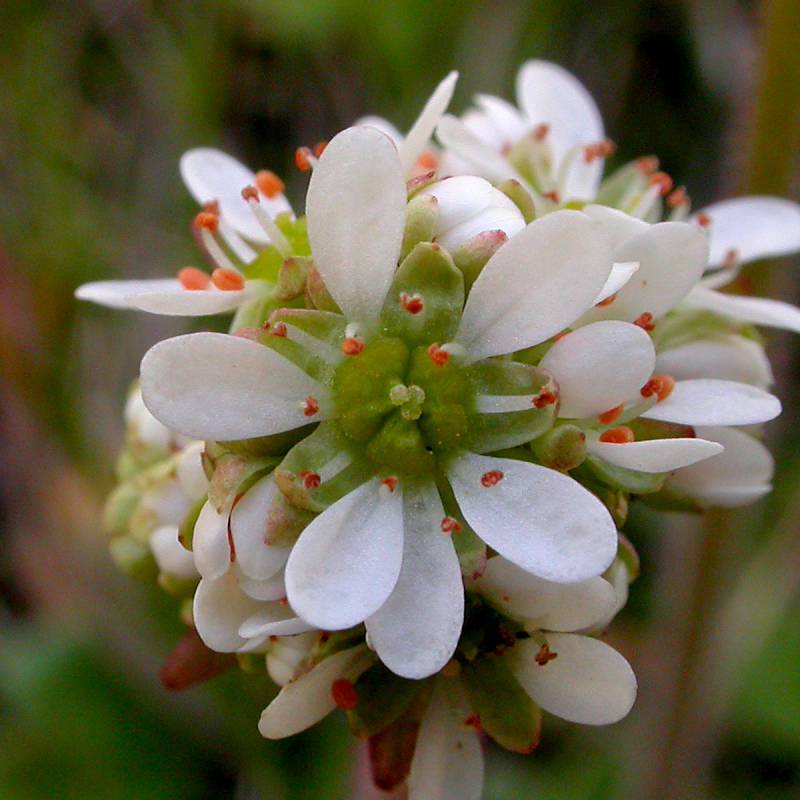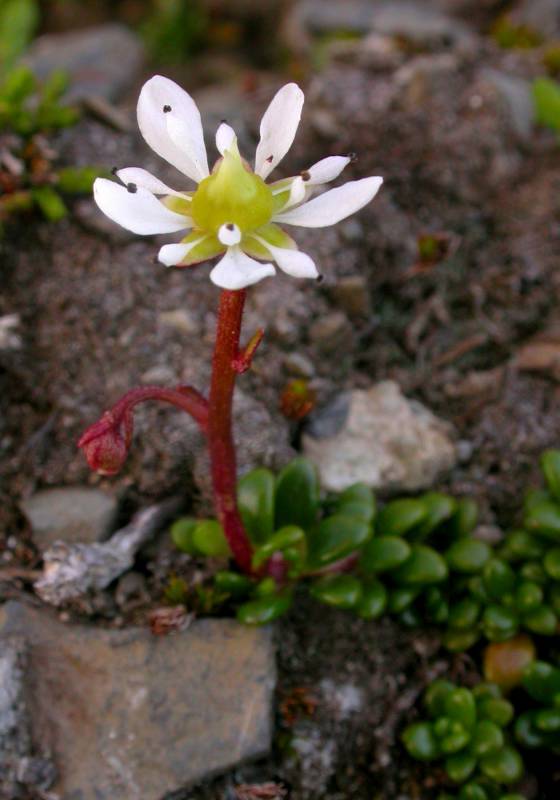Micranthes integrifolia
Micranthes tolmiei
Columbian saxifrage, swamp saxifrage, whole-leaf saxifrage
alpine saxifrage, Tolmie's alpine saxifrage, Tolmie's saxifrage
Leaves all basal, the blades 2-5 cm. long, narrowly rhombic to rhombic-ovate, narrowed gradually to broad petioles rarely as long, with prominent marginal hairs and rusty-woolly on the lower surface.
Leaves glabrous, entire, fleshy and nearly terete, 3-10 mm. long, spatulate to oblanceolate, narrowed to a broad base;
cauline leaves usually none, occasionally 1-3, reduced.
Inflorescence thyrsoid, (15-)20+-flowered, open to ± congested, conic (usually branched) subtended by a leafy, rusty-woolly bract;
calyx broadly conic, the 5 lobes oblong-lanceolate, 1-2 mm. long, reflexed;
petals 5, white, obovate, 1.5-3 mm. long, at least half as broad as long;
stamens 10, short, awl-shaped.
Flowers terminal and single, or 2-4 in a loose inflorescence;
calyx saucer-shaped, glabrous, often purplish-tinged, the 5 oval, spreading lobes 2-3 mm. long;
petals 5, white, up to twice as long as the calyx lobes, broadly oblanceolate, narrowed to the base;
stamens 10, the filaments somewhat petaloid.
Ovary about inferior in fruit; mature follicles 2, 3.5-5 mm. long, often reddish or purplish.
Ovary about 1/4 inferior at flowering; capsule ovoid, 8-12 mm. long, purplish-mottled;
carpels sometimes 3 or more.
Micranthes integrifolia
Micranthes tolmiei
- Local floras:
BC,
CA,
OR,
WA
- Local Web sites:
CalFlora,
CalPhotos,
Flora NW,
PNW Herbaria
WildflowerSearch
iNaturalist (observations)
USDA Plants Database
- LBJ Wildflower Center
- SEINet
- Plants of the World Online
- Encyclopedia of Life
- Wikipedia
- Google Image Search
- Local floras:
BC,
CA,
OR,
WA
- Local Web sites:
CalFlora,
CalPhotos,
Flora NW,
PNW Herbaria
WildflowerSearch
iNaturalist (observations)
USDA Plants Database
- LBJ Wildflower Center
- SEINet
- Plants of the World Online
- Encyclopedia of Life
- Wikipedia
- Google Image Search



